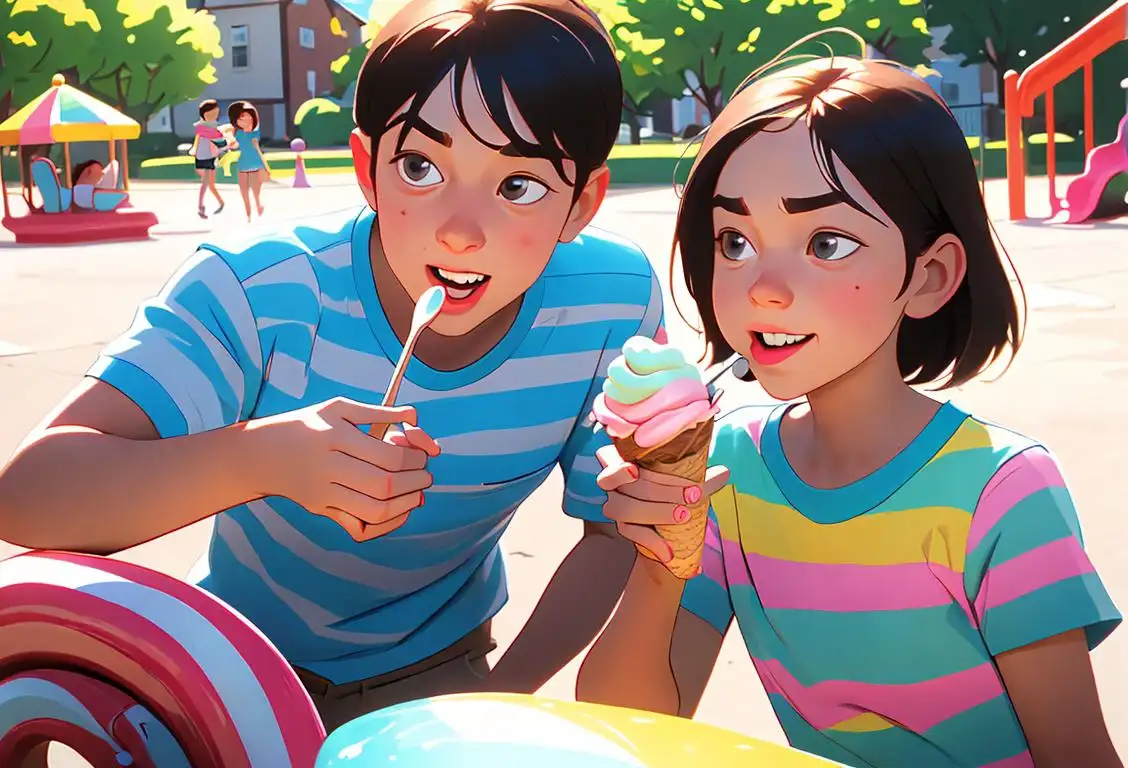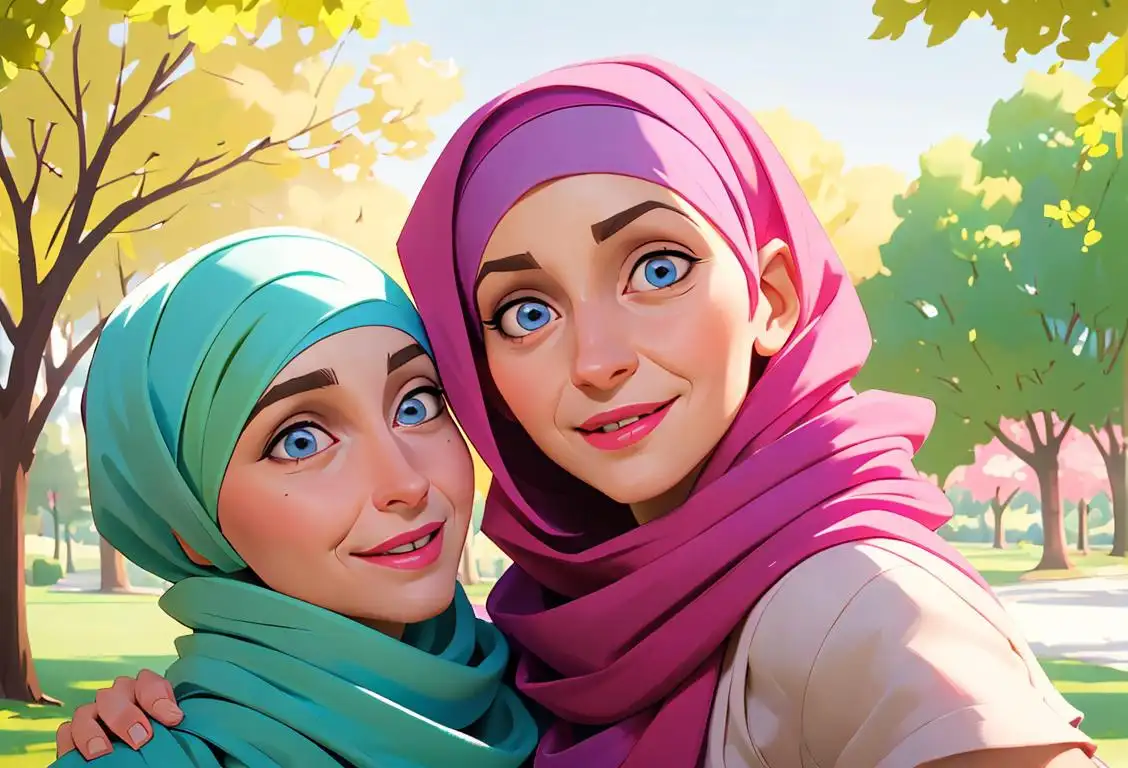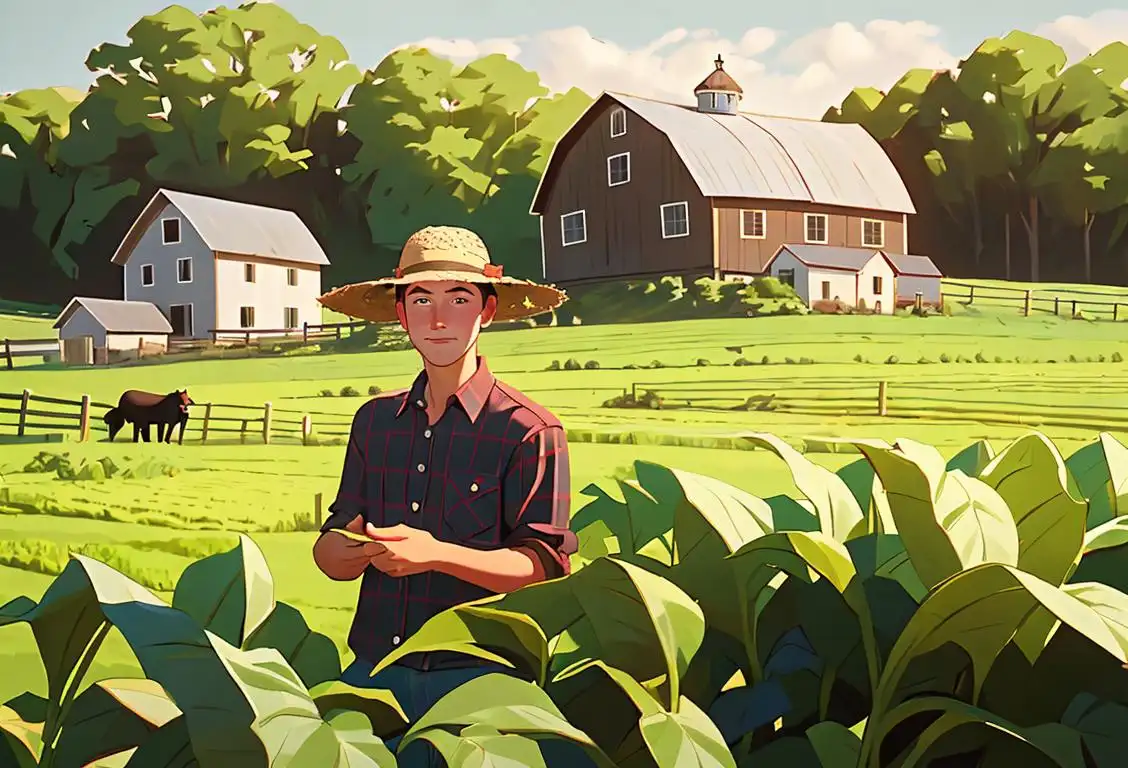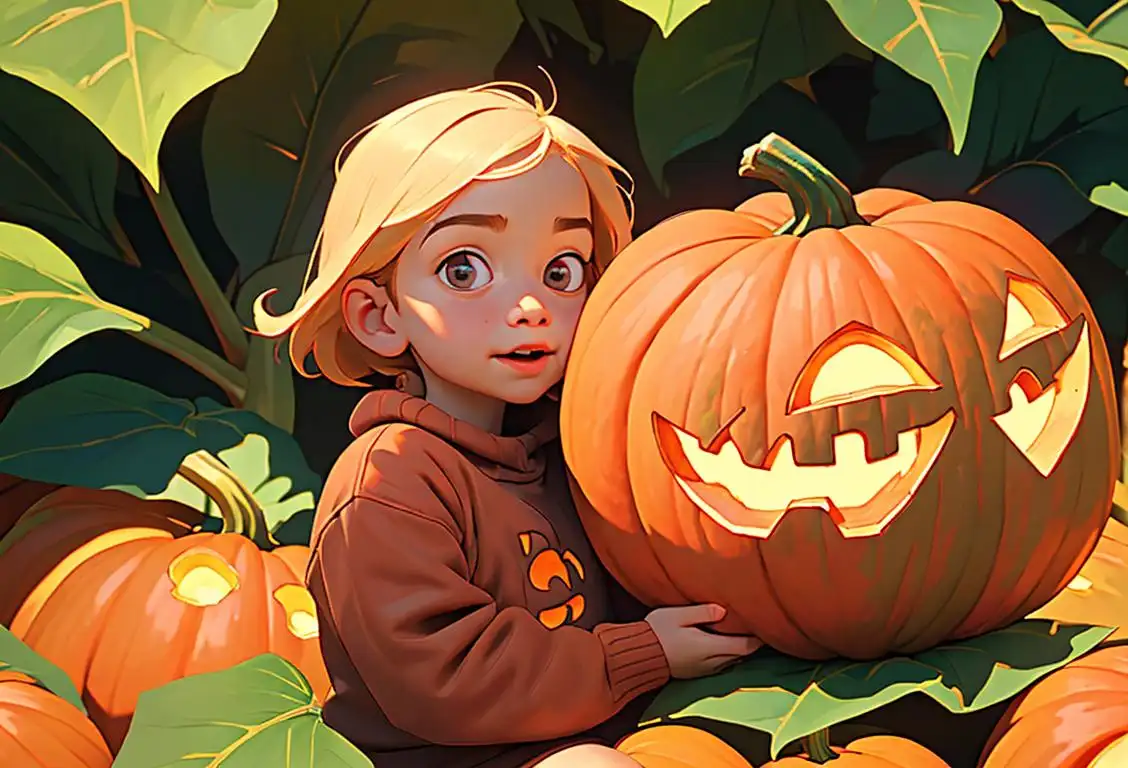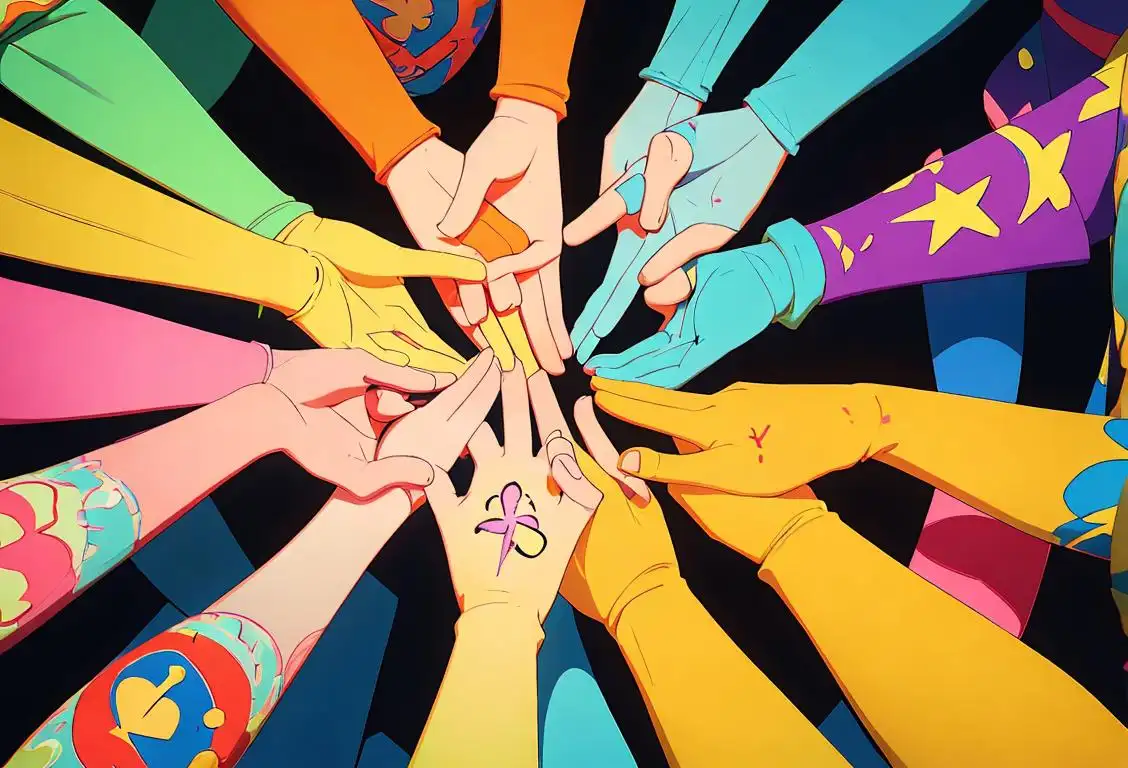National Disney Day
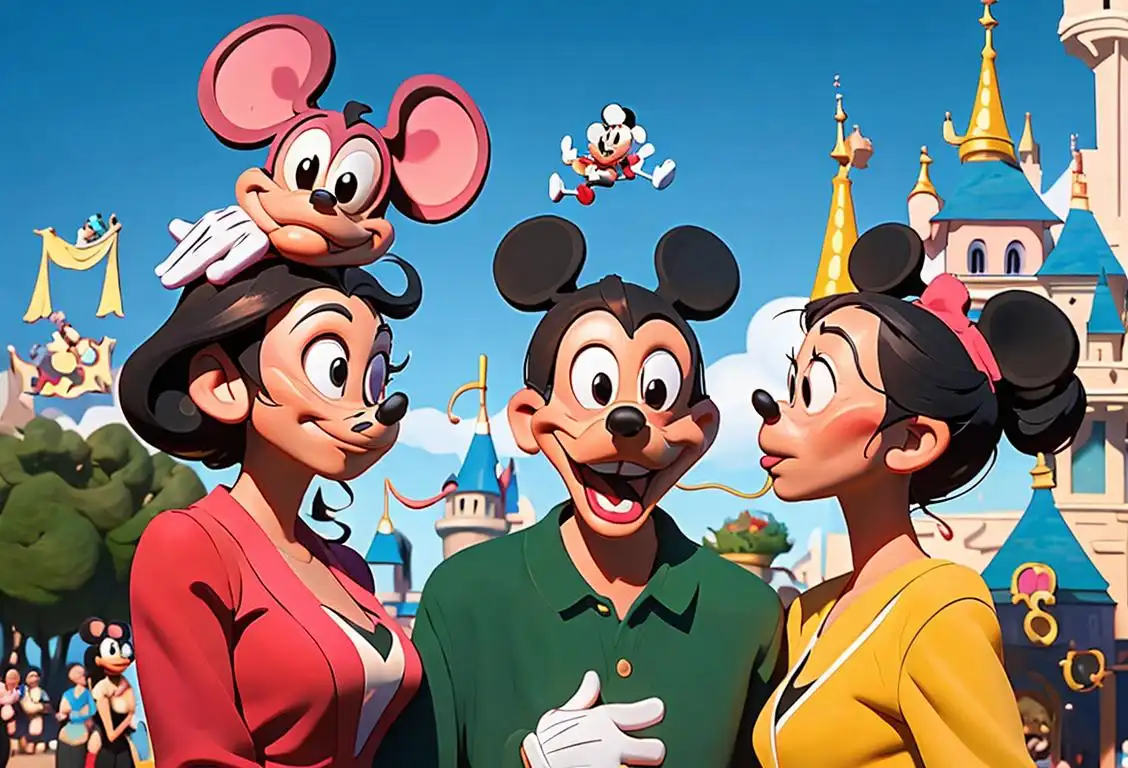
A day filled with mouse ears, magical soundtracks, and childhood nostalgia? Why, it's National Disney Day, of course! Grab your popcorn bucket and let's dive into the wonders of this day that tugs at our heartstrings (and childhood memories) with all the strength of a singing snowman.
When is Disney Day?
It's national disney day on the 17th January.
The Magic of National Disney Day
Internet records show that the worldwide phenomenon of National Disney Day was first most notably mentioned online on January 17, 2016. The magic, wonder, and childlike, let's admit it, absolute delight that the Disney universe brings, called us to its banner, and we collectively decided to have a day of joyous Disney-themed celebrations.
A Cartoon of History
National Disney Day celebrates Walt Disney, the man whose unstoppable imagination dreamt up worlds upon worlds of fantasy and adventure. Over the years, his creations have grown into an integral part of childhoods, imaginations, and living room cinema sessions the world over. From Snow White to Elsa, from Woody to Lightning McQueen, several icons have been born from Disney's imagination factory and celebrated on this day.
How Do We Remember?
By tuning in and dropping out! National Disney Day is about transporting oneself into a world of dreams and magic. Be it marathons of your favorite Disney films or a trip on a magic carpet ride, singing to the tunes of your beloved songs, or dressing up as your favorite characters - feel free to express your inner Disney magic in any way you please!
Share The Magic
One of the best parts about National Disney Day is the sharing. Whether it's watching movies with family or friends, or sharing social media posts of your celebrations, spread the love far and wide. So summarily, 'be our guest' to create magical memories that last a lifetime, because, in the end, all we truly need is 'faith, trust, and a little bit of pixie dust'!
History behind the term 'Disney'
1928
The Birth of a Mouse
In 1928, Walt Disney and Ub Iwerks created an adorable and mischievous cartoon character called Mickey Mouse. This spunky little mouse made his first appearance in the short film 'Steamboat Willie'. Mickey Mouse quickly became an incredibly popular character, capturing the hearts of both children and adults.
1923
Walt Disney Studios is Founded
In 1923, Walt Disney and his brother Roy O. Disney co-founded the Disney Brothers Studio in Los Angeles, California. The studio initially focused on producing animated short films, with the first one being the Alice Comedies series. This marked the beginning of the Disney brand.
1923
The Beginning of Walt Disney Studios
In 1923, Walt Disney and his brother Roy O. Disney founded the Disney Brothers Studio in Hollywood, California. Originally named the Disney Brothers Cartoon Studio, it primarily produced short films and commercial projects.
1923
The Birth of Disney
In 1923, Walt Disney along with his brother Roy O. Disney founded the Disney Brothers Cartoon Studio. They started producing a series of short films featuring a character named Oswald the Lucky Rabbit. These films gained popularity but unfortunately, Walt Disney lost the rights to Oswald due to a contractual dispute with his distributor.
1923
The Birth of Disney
In 1923, Walt Disney, along with his brother Roy O. Disney, founded the Disney Brothers Studio. Initially, the studio produced a series of short animated films known as the 'Alice Comedies'. These films featured a live-action little girl, Alice, who interacted with animated characters in various imaginative settings.
1923
The Birth of Disney
In 1923, Walt Disney, along with his brother Roy O. Disney, founded the Disney Brothers Studio. Originally called the Disney Brothers Cartoon Studio, their venture primarily focused on creating animated short films.
1923
The Beginnings of Disney
In 1923, Walt Disney signed a deal with a distribution company to produce a series of short films called the 'Alice Comedies.' These films featured a live-action girl named Alice who interacted with animated characters. This marked the beginning of the Disney brand and laid the foundation for the company's future success.
1923
The Beginning: Walt Disney Studios
In 1923, Walt Disney and his brother Roy O. Disney created the company that would later become synonymous with all things magical and entertaining: the Walt Disney Studios. Originally named the Disney Brothers Studio, it was founded in Los Angeles, California, and focused on creating animated films and cartoon characters.
1928
Mickey Mouse Debuts
In 1928, Walt Disney created a new character named Mickey Mouse. The animated short film 'Steamboat Willie' was released, featuring Mickey Mouse as the mischievous and energetic hero. This iconic film introduced synchronized sound in animation, capturing the hearts of audiences worldwide and propelling Mickey Mouse to become a cultural phenomenon.
1928
The Birth of a Mouse: Mickey Mouse
One of the most iconic moments in Disney history occurred in 1928 with the creation of Mickey Mouse. Walt Disney introduced the world to this lovable, mischievous, and adventurous mouse in the short film 'Steamboat Willie.' Mickey Mouse quickly became a sensation and an enduring symbol of Disney's creativity and innovation.
1928
Mickey Mouse Debuts
In 1928, Walt Disney introduced one of his most iconic characters, Mickey Mouse, in the short film 'Steamboat Willie'. This was the first animated film to synchronize sound with the actions on the screen, revolutionizing the industry. Mickey Mouse quickly became a cultural phenomenon, marking the beginning of Disney's global popularity.
1928
Mickey Mouse Makes His Debut
In 1928, Walt Disney introduced the world to Mickey Mouse, one of the most iconic characters in animation history. The first synchronized sound cartoon featuring Mickey was released, which was titled 'Steamboat Willie.' Mickey Mouse quickly became a symbol of the Disney brand and a beloved character worldwide.
1937
The Magic of Animation
In 1937, Walt Disney Pictures released their first full-length animated feature film, 'Snow White and the Seven Dwarfs'. The film, based on the Brothers Grimm fairy tale, was a groundbreaking achievement in animation. It solidified Disney's position as a pioneer in the animation industry and established the Disney brand as a symbol of high-quality entertainment.
1928
Enter Mickey Mouse
The year 1928 marked a turning point for Disney. After the loss of Oswald the Lucky Rabbit, Walt Disney came up with a new character named Mickey Mouse. The first Mickey Mouse cartoon, 'Steamboat Willie', was released in 1928 and it became an instant success. Mickey Mouse quickly became the face of Disney and the symbol of animation innovation.
1928
The Debut of Mickey Mouse
In 1928, Walt Disney introduced the world to Mickey Mouse through a cartoon called 'Steamboat Willie.' This marked the first synchronized sound cartoon and brought immense popularity to Disney's characters.
1928
Mickey Mouse's Debut
In 1928, the iconic character Mickey Mouse made his debut in the short film 'Steamboat Willie.' This marked the first cartoon to utilize synchronized sound and effectively launched Disney into the world of animation.
1932
The First Color Cartoon
In 1932, Disney premiered 'Flowers and Trees', the first full-color cartoon produced using the Technicolor process. This innovation introduced a new level of visual sophistication to animation and set Disney apart from other studios. 'Flowers and Trees' went on to win the first Academy Award for Animated Short Film.
1937
Snow White and the Seven Dwarfs
In 1937, Disney released its first full-length animated feature film, 'Snow White and the Seven Dwarfs.' This groundbreaking film was a major success, becoming the highest-grossing sound film at the time. It showcased Disney's ability to create captivating storytelling through animation and solidified the company's reputation as a pioneer in the industry.
1937
Snow White and the Seven Dwarfs
In 1937, Disney released its first full-length animated feature film, 'Snow White and the Seven Dwarfs.' This groundbreaking movie became a massive success, earning widespread acclaim and setting a new standard for animated films.
1937
Disney's First Full-Length Animated Feature: Snow White and the Seven Dwarfs
In 1937, Disney released their first full-length animated feature film, 'Snow White and the Seven Dwarfs.' This groundbreaking movie brought the enchanting fairy tale to life with stunning animation and unforgettable characters. It was an unprecedented success, making Disney a pioneer in the world of animated storytelling.
1955
A Dreamland Comes to Life
In 1955, the first Disneyland theme park opened its doors in Anaheim, California. Walt Disney's vision of creating a place where families could come together and experience the magic of Disney's stories and characters became a reality. Disneyland quickly became an iconic destination, sparking the global popularity of theme parks and establishing Disney's position as a leader in the entertainment industry.
1937
Snow White and the Seven Dwarfs
In 1937, Disney released its first full-length animated feature film, 'Snow White and the Seven Dwarfs.' The film became a significant success and solidified Disney's position as a leader in animation.
1932
First Technicolor Cartoon
By 1932, Disney had made a major advance in animation by introducing full-color three-strip Technicolor. The groundbreaking cartoon, 'Flowers and Trees', was the first to utilize this vibrant color process. The film won the Academy Award for Best Animated Short Subject and showcased Disney's commitment to innovation and artistic excellence.
1937
Snow White and the Seven Dwarfs Premieres
In 1937, Disney released their first full-length animated feature film, 'Snow White and the Seven Dwarfs.' This groundbreaking film was a massive success and revolutionized the animation industry. It showcased Disney's ability to create enchanting stories and memorable characters, solidifying their reputation as pioneers of animation.
1955
Disneyland Opens
In 1955, Disneyland, the first-ever theme park designed and built by Walt Disney, opened its doors in Anaheim, California. This immersive and innovative park featured various themed lands, attractions, and entertainment experiences, providing a magical and unforgettable experience for families. Disneyland set a new standard for theme parks and became a model for future Disney parks worldwide.
1955
Opening of Disneyland
In 1955, Disneyland, the first-ever theme park created by Disney, opened its doors in Anaheim, California. The park offered visitors an immersive experience with various themed lands and attractions.
1937
Snow White's Enchanting Debut
In 1937, Disney released its first full-length animated feature film, 'Snow White and the Seven Dwarfs'. Despite initial skepticism from the film industry, the movie became a tremendous success, setting the stage for future Disney classics. With its memorable characters, captivating storytelling, and beautiful animation, 'Snow White' secured Disney's position as a pioneer in the field of animation.
1937
The Release of Snow White
1937 saw the release of Disney's first full-length animated feature film, 'Snow White and the Seven Dwarfs'. This film, based on the German fairytale, revolutionized the animation industry. It was the first animated film to use synchronized sound and the first to be produced in Technicolor. 'Snow White' was a massive success, becoming the highest-grossing film of its time.
1955
The Happiest Place on Earth: Disneyland
The year 1955 marks the grand opening of Disneyland, the world's first-ever theme park. Located in Anaheim, California, Disneyland captured the imagination of millions with its magical lands, enchanting attractions, and beloved Disney characters roaming the park. Disneyland defined a new era of immersive entertainment, setting the standard for theme parks worldwide.
1955
Disneyland Opens
1955 witnessed the grand opening of Disneyland, the world's first-ever theme park, located in Anaheim, California. Walt Disney wanted to create a magical place where families could have fun together. Disneyland introduced innovative attractions, immersive experiences, and brought Disney's beloved characters to life in a tangible way.
1983
The Power of Merchandising
In 1983, Disney launched the Disney Channel, a cable and satellite television network that was dedicated to family-friendly programming. This move allowed Disney to expand its reach beyond the big screen and into the homes of millions of viewers. Additionally, Disney's strategic focus on merchandising and licensing their characters and stories became a significant revenue stream, solidifying the Disney brand as an influential cultural phenomenon.
1955
Disneyland: The Original Theme Park
In 1955, Disneyland, the first-ever theme park by Disney, opened its doors in Anaheim, California. It quickly became a cultural phenomenon, setting the stage for the theme park industry as we know it today.
2006
The Magic Spreads Online
In 2006, Disney acquired the popular video-sharing platform, YouTube, by purchasing its parent company, Google. This acquisition allowed Disney to tap into the growing digital landscape and reach even larger audiences worldwide. By leveraging online platforms and creating tailored digital content, Disney continued to capture the attention and engagement of new generations, ensuring the longevity of the Disney magic.
1983
The Launch of Disney Channel
In 1983, the Disney Channel began broadcasting as a cable network. Originally a premium service, it later transitioned into a standard cable channel, providing family-friendly programming and popular original shows.
1955
Disneyland: The Happiest Place on Earth
In 1955, Disneyland, the first-ever theme park, opened its doors in Anaheim, California. This groundbreaking amusement park provided visitors with a magical experience, bringing Disney's beloved characters to life in various themed lands. Disneyland quickly became a symbol of joy and wonder, shaping the future of entertainment and inspiring the creation of numerous theme parks worldwide.
1983
Disney Channel Launches
In 1983, Disney expanded its reach by launching the Disney Channel, a television network dedicated to family-friendly programming. The channel showcased animated series, original movies, and eventually became a platform for Disney's iconic shows like 'DuckTales,' 'The Little Mermaid,' and 'Mickey Mouse Club.'
1966
Walt Disney's Passing
In 1966, Walt Disney passed away at the age of 65. Despite his absence, his legacy continued to drive the company forward, maintaining his vision and creative spirit.
1983
The Expansion Begins: Tokyo Disneyland
Disney's global influence became even more apparent in 1983 when Tokyo Disneyland opened its gates. This marked the first Disney theme park outside of the United States and proved that the magic of Disney could transcend cultural boundaries. Tokyo Disneyland became a significant milestone, leading the way for Disney's expansion into other countries.
1984
The Birth of The Disney Channel
In 1984, The Disney Channel, a subscription-based cable television network, was launched. Originally created as a way to showcase Disney's vast library of animated and live-action content, the channel grew over the years to produce its own original programming. It became a beloved source of family-friendly entertainment and contributed to the expansion of the Disney brand beyond film and theme parks.
1955
The Opening of Disneyland
In 1955, Walt Disney realized his dream of creating a magical place where people could experience Disney's stories and characters come to life. Disneyland, the first-ever theme park, opened its doors in Anaheim, California. The park included various themed lands, such as Fantasyland, Adventureland, Tomorrowland, and Main Street, USA, providing visitors with a one-of-a-kind entertainment experience.
1983
The Launch of Disney Channel
In 1983, Disney expanded its reach by launching the Disney Channel, a cable and satellite television network dedicated to family-friendly programming. The channel initially struggled to find an audience but eventually became a staple in households around the world. Over the years, the Disney Channel has produced numerous successful original series and movies, launching the careers of many young actors and actresses.
1986
Bringing Disney Magic to Television: The Disney Channel
In 1986, Disney launched its own television channel, aptly named 'The Disney Channel.' This network became a platform for showcasing exclusive Disney content and introduced audiences to a variety of animated and live-action shows, beloved characters, and original programming. The Disney Channel played an integral role in broadening Disney's presence beyond movies and theme parks.
1983
The First Disney Channel Broadcast
In 1983, the Disney Channel made its debut on cable television. Initially, it was a premium channel featuring family-friendly programming, but over the years, it expanded its reach and became a staple in households worldwide.
1989
The Little Mermaid Resurrects Disney Animation
After a period of decline, the release of 'The Little Mermaid' in 1989 marked a significant turning point for Disney animation. The film became a massive success, receiving critical acclaim and commercial triumph. 'The Little Mermaid' sparked the Disney Renaissance, a revitalization of classic animated films that captivated audiences throughout the 1990s.
2006
Acquisition of Pixar Animation Studios
In 2006, Disney acquired Pixar Animation Studios, a pioneer in computer animation known for hit films like 'Toy Story,' 'Finding Nemo,' and 'The Incredibles.' This acquisition not only brought together two powerhouse animation studios but also allowed Disney to tap into Pixar's creative talent and innovative storytelling techniques. The collaboration led to the creation of numerous critically acclaimed and commercially successful films.
1984
The Expansion of Disney
In 1984, Disney embarked on a new chapter with the acquisition of the film and television production company, Touchstone Pictures. This strategic move allowed Disney to produce a wider range of content, including more mature and live-action films. It marked a shift in Disney's image and demonstrated the company's ability to adapt and thrive in a changing industry.
1989
The Disney Renaissance
In 1989, with the release of 'The Little Mermaid,' Disney ushered in a period of tremendous success known as the 'Disney Renaissance.' This era saw the revival of Disney animated films, captivating audiences with memorable characters and enchanting stories.
2006
Acquisition of Pixar Animation Studios
In 2006, Disney acquired Pixar Animation Studios, the renowned animation studio responsible for groundbreaking films such as 'Toy Story', 'Finding Nemo', and 'The Incredibles'. The merger brought together two animation powerhouses and strengthened Disney's position as a leader in the industry. Pixar's creative talent and innovative storytelling techniques have greatly influenced Disney's animated films in the following years.
2019
Launch of Disney+ Streaming Service
In 2019, Disney introduced its highly anticipated streaming service, Disney+. With a vast library of classic Disney films, television shows, and exclusive new content, Disney+ quickly gained millions of subscribers worldwide. This marked a significant shift in the entertainment industry as Disney embraced the digital age and adapted to changing consumer preferences.
2006
Disney Acquires Pixar
In 2006, Disney acquired Pixar Animation Studios, the groundbreaking animation studio founded by Steve Jobs, Ed Catmull, and John Lasseter. This acquisition brought together two giants in the animation industry and enabled Disney to tap into Pixar's innovative storytelling and technological prowess.
2006
Pixar Joins the Family: Disney-Pixar Merger
A significant step in Disney's history occurred in 2006 when Disney acquired Pixar Animation Studios. This merger brought together two creative powerhouses and solidified Disney's position as a leader in animated storytelling. The collaboration between Disney and Pixar resulted in timeless classics like 'Toy Story,' 'Finding Nemo,' and 'Up,' captivating audiences of all ages.
2006
The Disney-Pixar Merger
In 2006, Disney acquired the renowned animation studio, Pixar, in a historic merger. This partnership brought together two giants of animation, combining Disney's storytelling expertise with Pixar's groundbreaking computer-generated animation technology. The collaboration has resulted in beloved films such as 'Toy Story', 'Finding Nemo', and 'Frozen', further solidifying Disney's impact on popular culture.
2019
A New Era: Disney+ Streaming Service
Disney+ was launched in 2019, marking a new chapter in Disney's history. With this streaming service, Disney provided a platform to access their extensive library of movies, TV shows, and original content. Disney+ quickly gained popularity and became a go-to destination for Disney enthusiasts, allowing them to experience the magic at home at any time.
2006
Disney-Pixar Merger
In 2006, Disney acquired the animation studio Pixar, known for producing beloved films like 'Toy Story' and 'Finding Nemo.' This merger brought together two animation powerhouses, expanding Disney's creative reach and broadening its portfolio.
2009
Acquisition of Marvel Entertainment
In 2009, Disney made a significant move by acquiring Marvel Entertainment, the home of iconic superheroes like Spider-Man, Iron Man, and the Avengers. This acquisition enabled Disney to expand its reach into the realm of live-action superhero movies and further diversify its entertainment offerings.
2019
Launch of Disney+ Streaming Service
In 2019, Disney launched its highly anticipated streaming service, Disney+. This platform offers a vast library of classic and new Disney films, TV shows, and exclusive content from franchises like Marvel, Star Wars, and National Geographic. Disney+ quickly gained millions of subscribers worldwide, solidifying Disney's presence in the digital entertainment landscape.
2019
The Launch of Disney+ Streaming Service
In 2019, Disney revolutionized the entertainment industry once again with the launch of Disney+, its subscription-based streaming service. Disney+ offers a vast library of content, including classic animated films, original series, and exclusive content from franchises like Star Wars and Marvel. This digital platform showcases Disney's ability to adapt to changing consumer preferences and maintain its position at the forefront of popular culture.
2019
Disney+ Streaming Service
In 2019, Disney launched its streaming service, Disney+. The platform provides access to a vast library of Disney content, including classic films, original shows, and exclusive content from Pixar, Marvel, and Star Wars.
2012
Lucasfilm Joins the Disney Family
In 2012, Disney made yet another groundbreaking acquisition by purchasing Lucasfilm, the company behind the 'Star Wars' franchise created by George Lucas. This move allowed Disney to incorporate the beloved galaxy far, far away into its portfolio, leading to new movies, TV shows, and an expansion of the 'Star Wars' universe.
2019
Launch of Disney+ Streaming Service
In 2019, Disney ventured into the world of streaming with the launch of Disney+. The streaming service offers a vast library of Disney, Pixar, Marvel, Star Wars, and National Geographic content, as well as original series and films. It has since become a popular platform for audiences to access a wide range of Disney entertainment.
Did you know?
Did you know? The famous 'I'm going to Disney World!' phrase reportedly began as a joke between Disney CEO Michael Eisner and his wife during a dinner party!Tagged
awareness fun loved ones rememberanceFirst identified
17th January 2016Most mentioned on
17th January 2016Total mentions
5Other days
Cheese Lovers Day
Teddy Bear Day
Sibs Day
Biscuit Day
Cancer Survivors Day
Agriculture Day
Pumpkin Day
Suicide Prevention Day
Memorial Day
First Responders Day


